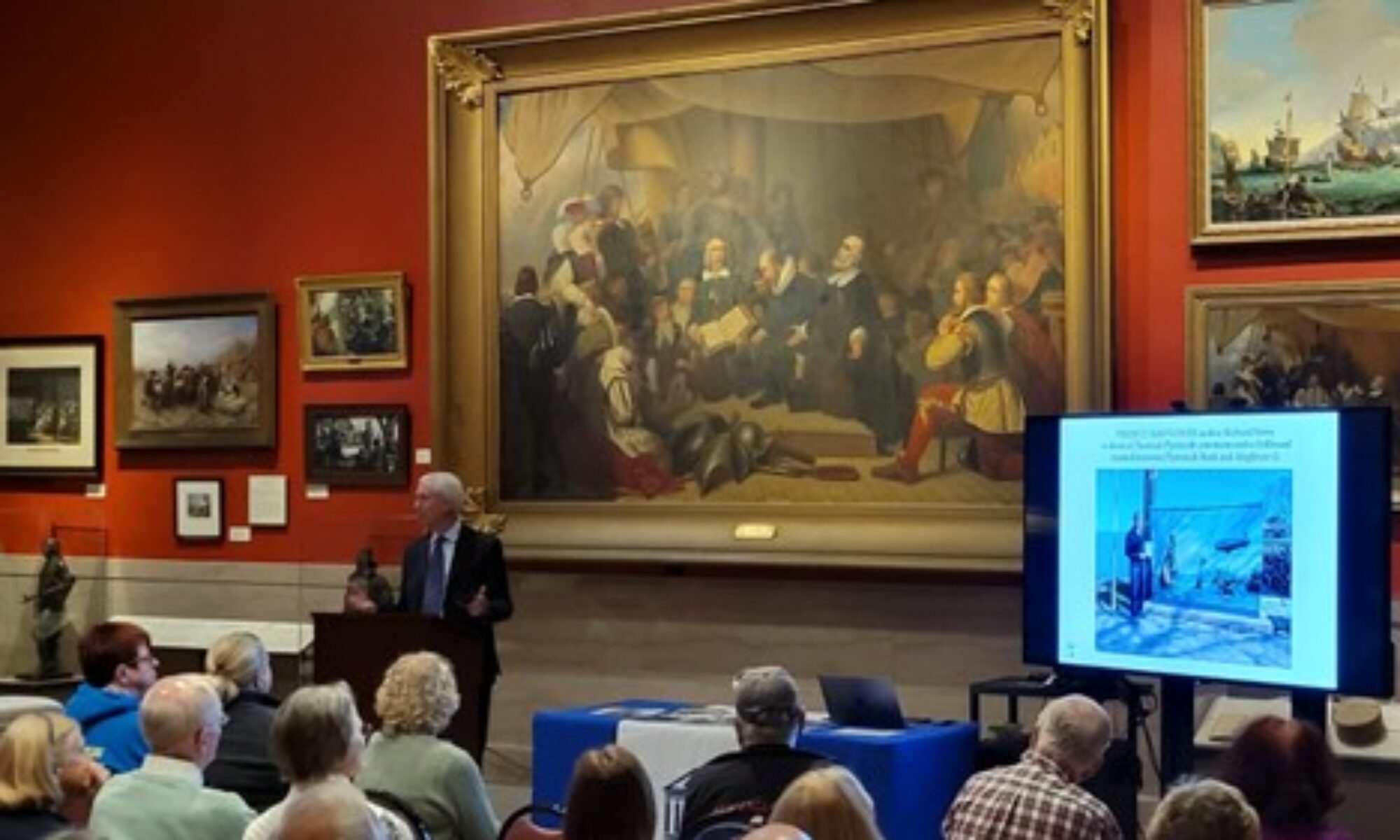Arrival at Plymouth
Mayflower arrived in New England on November 11, 1620 after a voyage of 66 days. Although the Pilgrims had originally intended to settle near the Hudson River in New York, dangerous shoals and poor winds forced the ship to seek shelter at Cape Cod. Because it was so late in the year and travel around Cape Cod was proving difficult, the passengers decided not to sail further and to remain in New England. It was here, in Cape Cod Bay, that most of the adult men on the ship signed the document that we know as the Mayflower Compact. It laid the foundation for the community’s government.
A party of the most able men began exploring the area to find a suitable place to settle. After several weeks, the exploring party arrived at what appeared to be an abandoned Wampanoag community. The plentiful water supply, good harbor, cleared fields, and location on a hill made the area a favorable place for settlement.
Mayflower arrived in Plymouth Harbor on December 16, 1620 and the colonists began building their town. While houses were being built, the group continued to live on the ship. Many of the colonists fell ill. They were probably suffering from scurvy and pneumonia caused by a lack of shelter in the cold, wet weather. Although the Pilgrims were not starving, their sea-diet was very high in salt, which weakened their bodies on the long journey and during that first winter. As many as two or three people died each day during their first two months on land. Only 52 people survived the first year in Plymouth. When Mayflower left Plymouth on April 5, 1621, she was sailed back to England by only half of her crew.
Learn more about the PLYMOUTH ARRIVAL.
